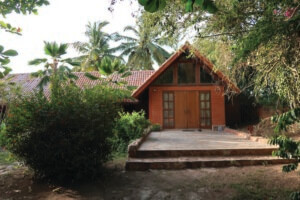From superlatively tall skyscrapers to transformative public spaces, contemporary women architects—not to mention landscape architects, interior designers, engineers, builders, developers, clients, and on—play an indelible role in shaping the built environment of Illinois, a state with an architectural history that’s as fascinating as it is influential.
Reverently glancing backwards in celebration of those who have helped to pave the way for today’s female architectural vanguards, Landmarks Illinois has launched a first-of-its-kind online database of trailblazing women working within the AEC industries and related fields in and around Chicagoland (and further across the state) from 1879 through 1979. The new database, dubbed Women Who Built Illinois, follows a comprehensive survey launched by Landmarks Illinois in 2020 to coincide with the centenary of the 19th Amendment.
While a handful of likely-familiar names appear within the over 100-person-strong database (Margaret McCurry, Natalie de Blois, Edith Farnsworth, and Marion Mahoney Griffin to name a few), the project makes a point of calling attention to female architects, designers, and builders whose contributions are often unsung, overlooked, and, in some cases, endangered by neglect or new development. As noted in a press release, many of these places “remain unprotected without local landmark status or lack National Register designation that would provide opportunities for important financial preservation incentives” despite being admired by local community members and property owners across the state.
“This new database recognizes those who laid the path for women today and who continue to impact the built environment of Illinois and Chicago,” said Lisa DiChiera, the Director of Advocacy at Landmarks Illinois Director of Advocacy who led the Women Who Built Illinois project. “We hope students and professionals in architecture, planning and public history will be inspired to study these women, their careers and built works.”
In addition to McCurry, de Blois, Farnsworth, and Mahoney Griffin, the last of whom was one of the first licensed female architects anywhere and an original member of the Prairie School (a 2017 Curbed profile referred to her as Frank Lloyd Wright’s “best frenemy”), just a few other pioneering women appearing in the database include:
- Studying under Mies van der Rohe at the Armour Institute of Technology (now the Illinois Institute of Technology), Kansas-born Georgia Louise Harris Brown (1918–1999) went on to become the second African American woman to obtain an architecture license in the United States in 1949. Brown worked extensively in Chicago from the mid-1940s through the early-50s but ultimately decamped for Brazil, where she believed that there were greater opportunities for architects of color than in the U.S.
- A prominent modernist and highly decorated fellow of the American Institute of Architects whose completed works include the iconic Rotunda building at O’Hare International Airport and the Skokie Public Library, Gertrude Lempp Kerbis (1926-2016) opened her own eponymous Chicago firm in 1967 after studying with Mies and working at prominent firms include C.F. Murphy Associates and Skidmore Owings & Merrill.
- A former Miss Detroit who went on to become both an architect and developer, Greta Lederer (1916–1976) was the driving force behind a number of mid-century residential subdivisions across suburban Chicago including Strawberry Hill in Glencoe.
- Margaret Zirkel Young (1941–), a German-born, Chicago-educated architect, now retired, who worked with Chicago firms including Ezra Gordon & Jack M. Levin & Associates (1969–1986; as associate from 1974 onwards) before going into private practice in 1986. “I never questioned being in a room with all men and no women,” said Zirkel Young in a statement. “I knew from the time of my first drafting class at Senn High School I wanted to be an architect. A favorite Goethe quote I would return to throughout my career was, ‘Boldness has genius.’”
Women Who Built Illinois was made possible with financial support from: Women in Restoration & Engineering (WiRE), AIA Illinois, the Kohler Fund for the Midwest of the National Trust for Historic Preservation, and Kim Kerbis, in honor of her mother, Gertrude Lempp Kerbis.
Joining DiChiera on the project research and development front was Erica Ruggiero, principal at McGuire Igleski & Associates, Inc., and Landmarks Illinois intern Cray Kennedy. Architectural historian, planner, and preservationist Julia Bachrach and student volunteer Jared Saef provided additional research and peer review.
Those with additional information and/or photography relevant to the database can submit those materials here.











